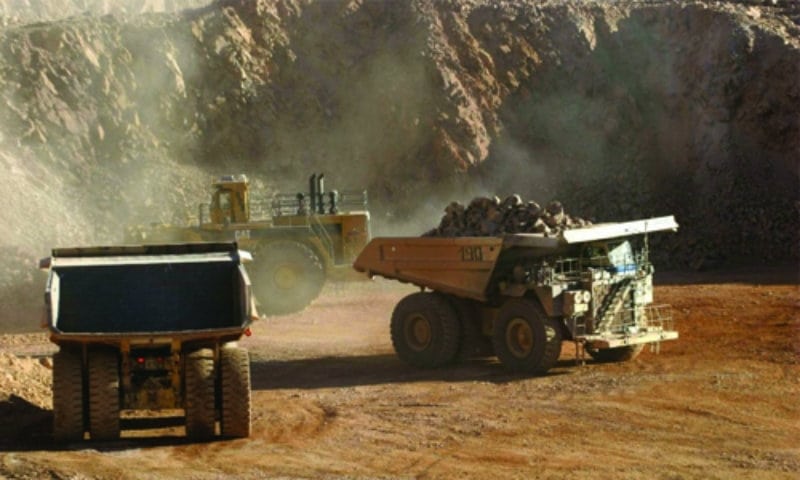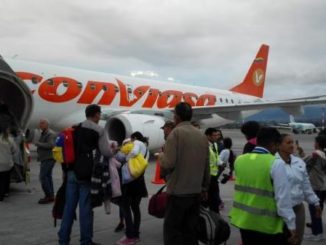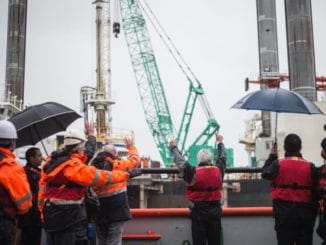
ANTOFAGASTA – Black dust stains the walls of the building where Jaqueline Jimenez and her children once lived in northern Chile.
In an industrial city like Antofagasta, there is perhaps nothing so unusual in that – but Jimenez says she fears that this dust carries a poisonous burden, and that her children now bear it in their bodies.
It is blown on the wind from the nearby port, where copper from the region’s abundant mines is loaded and shipped across the world.
Long known as a hub of production in the world’s biggest miner of the red metal, Antofagasta has earned a darker distinction as Chile’s cancer capital.
Authorities have called for calm, insisting that heavy metals cannot be breathed in and are only poisonous if ingested. But Jimenez is not convinced.
“It is not normal that everyone should be dying of cancer here,” she says. “It is a death sentence for my family.”

Arsenic
Run your finger along the window sill in Jimenez’s old home and it will come away black with dust that is hard to wash off.
A study by the Public Health Institute identified 16 different metals in the dust.
The Antofagasta Medical College said it found “arsenic, cadmium, zinc, chrome, copper, lead and manganese which far exceed Chilean norms.”
Jimenez lived for five years in an apartment building opposite the port terminal in the city center.
Her children would play out on the roof terrace, unwittingly exposed to the dust.
She says medical tests carried out by specialists abroad have confirmed that the children, now aged 10 and 20, have traces of carcinogenic heavy metals.

High income, cancer risk
Mining has helped raise residents’ annual income in Antofagasta to nearly double the national average: some $36,000.
But it is also blamed for giving the city the highest rate of lung cancer deaths: more than double the average at just under 35 per 100,000 inhabitants.
Bladder and skin cancer deaths are also high.
“Scientists consider that the Antofagasta area is undergoing a biological experiment in having the population exposed to such levels of contamination,” the president of the Antofagasta Medical College, Aliro Bolados, told Agence France-Presse.
Decades of pollution
The scourge of pollution in Antofagasta goes back decades.
In 1998, doctors detected dangerously high levels of lead in children living near a freight railway in the city.
Further back, high levels of arsenic found in the local drinking water between 1958 and 1971 are blamed for a rise in diseases.
People born during that period who are now in their forties or fifties are at high risk of cancer, says Catterina Ferreccio, deputy head of the Center for Advanced Study of Chronic Diseases, Epidemiology and Cancer.
“There is a whole generation that has had all these things,” she said.
“Despite having the highest per capita income, they have the lowest life expectancy in Chile.”
‘This Dust Kills You’
The arsenic threat was brought under control. Now attention is focused on the black dust blowing from the port.
The port’s operators, the major Chilean conglomerate Luksic, have signed a commitment to “clean production.”
Despite that, a court fined the company $1.3 million in October for pollution and ordered them to clean up the area. The port continues to operate.
“They prefer to sacrifice Antofagasta than to stop Chile making money,” said Ricardo Diaz of “This Dust Kills You,” a group campaigning for the port to be moved.
Testing the children
Authorities have called for calm, insisting that even people living nearby have been exposed to levels of heavy metals below the legal safety limits.
In late 2015, hundreds of children in surrounding schools and nurseries were tested for lead in the blood. More than 99 percent of them were found to be within the safe limits, according to international recommendations.
But the Antofagasta Medical College said further tests were needed.

Jimenez sent samples of her children’s hair abroad to have them analyzed. She says the results indicated higher levels of poisonous metals.
Some experts have cast doubt on the validity of the hair tests — but they say children’s exposure to the dust should in any case be limited, due to uncertainty about what effect it could have over the long term.
“There should be obligatory annual tests for children from one to six years old,” the city’s mayor, Karen Rojo, told AFP, “to determine the damage to the population.”



